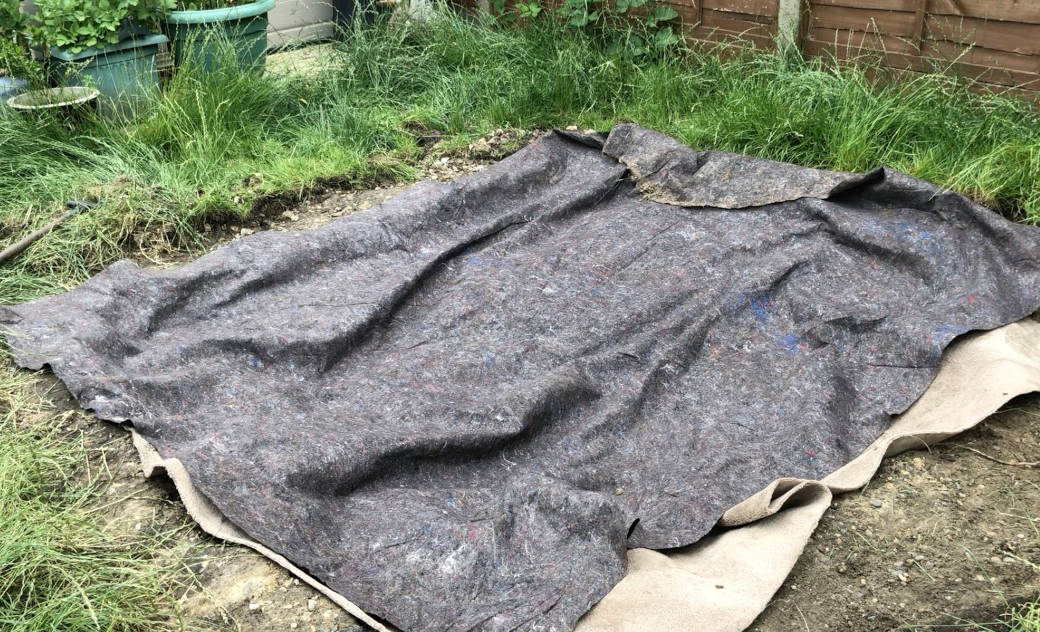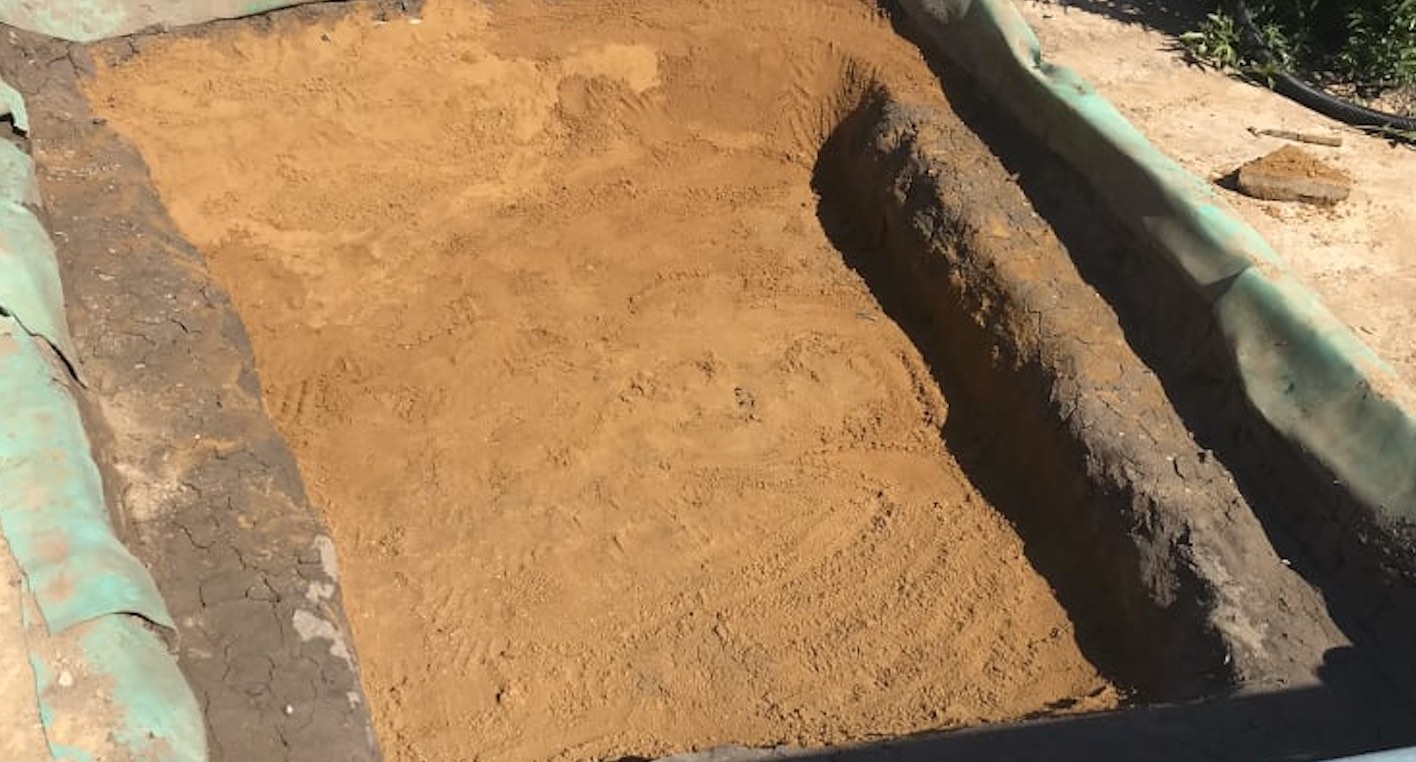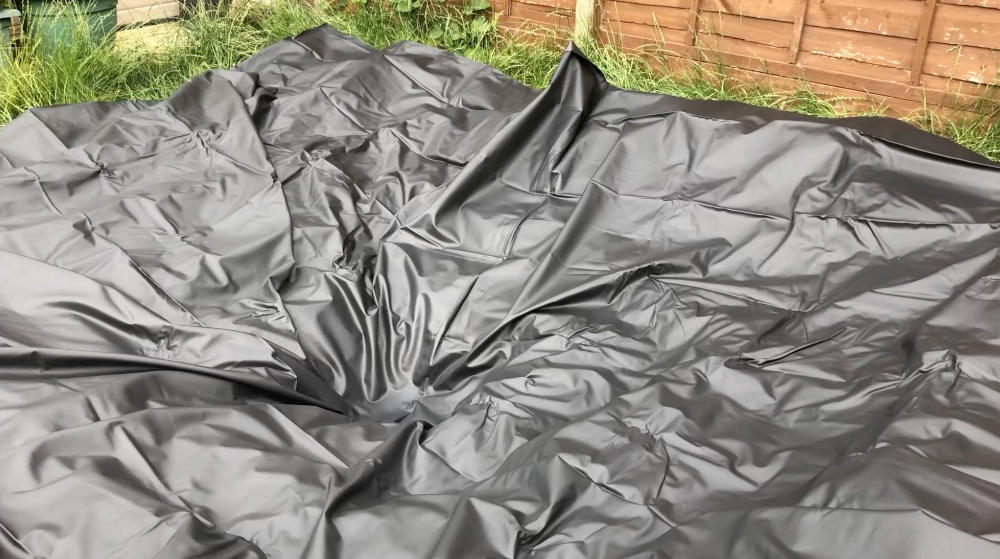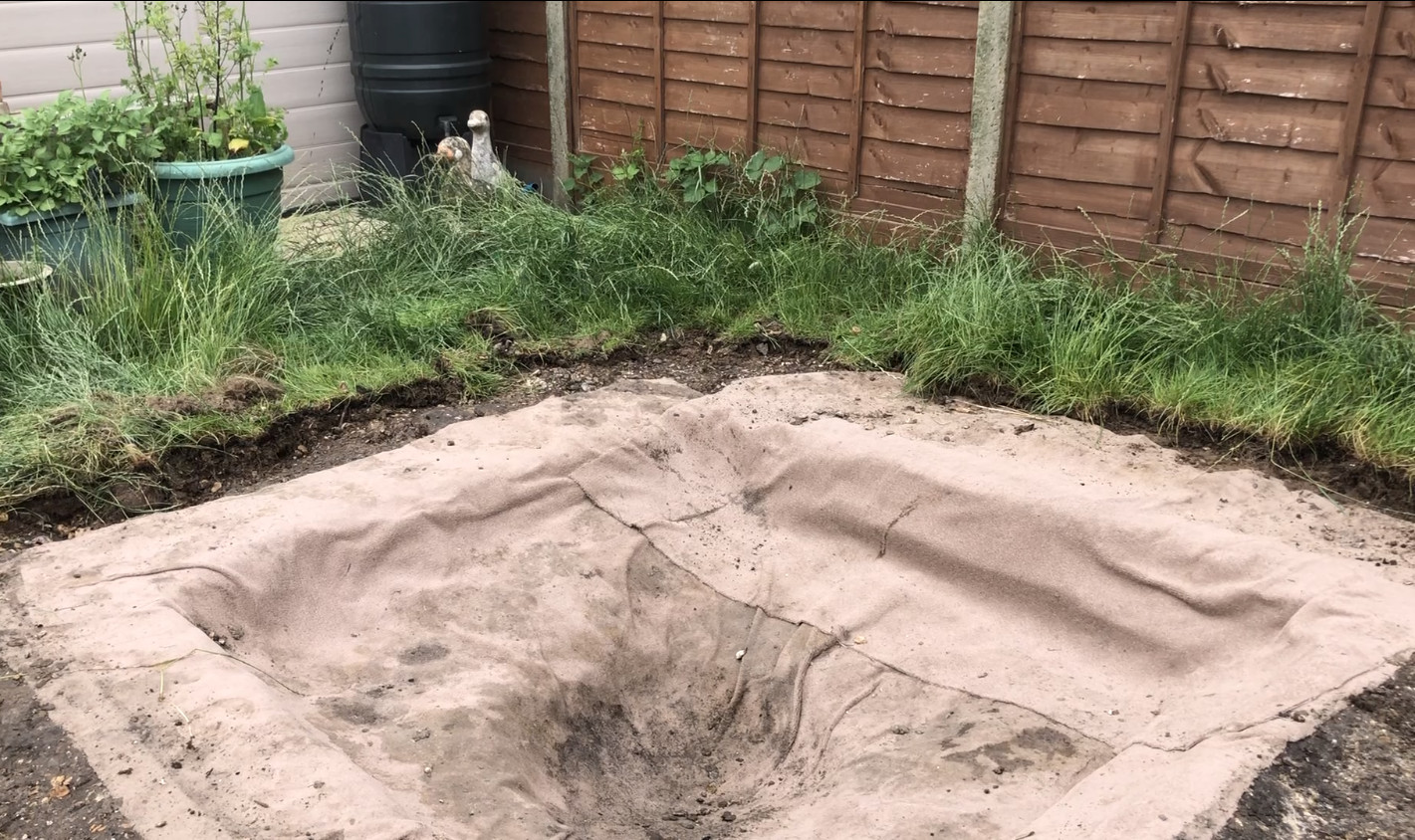Installing the Underlay
Unfold or unroll your underlay and drop it into the pond, push it into the corners and shelves as neatly as you can flattening out any large creases. If you are using thick carpet it maybe a little more challenging than other materials to get flat and in the corners. If it is too difficult then a sharp knife, can be used to split and overlap any bulges.
The following picture show a carpet and a fabric underlayer ready to be pressed into place.

If you are using sand as the underlay then this is a different process altogether than laying down a underlay sheet or large squares of carpet. Instead of laying the materials, you will be layering on the sand like icing a cake. This is really only possible if the sand is damp, as it needs to be sticky enough to hold in place. Builders yellow sand is ideal for this as it generally comes quite moist compared to something like, kiln dried sand which I have found to be too fine and powdery for this task.
Example of a sand underlay

Install the liner
Once the underlay is down, you can move onto the actual liner itself. Worth noting, the liner needs to be treated with more care than the underlay as it may become damaged by sharp objects, for example any tools you have in the area.
Stretch the liner across the width of the pond, push it down into the deep parts of the pond so it fits into the shape of the pond as snugly as possible.

Install the Overlay
Once the liner is squarely in position and is pushed into all of the steps and undulations of the pond, it is time to, optionally add an overlay. This is optional, but highly recommended. The overlay can be made from the same material as the underlay, so carpet or a fabric liner . If you don’t have any suitable material such as carpet or spare underlay then you if very pushed can use spare liner giving some slight protection.
